I have a DataGrid with DataGridTemplateColumn. The DataGridTemplateColumn contains a button and TextBlock. I want that pressing the button will clear the textBlock's text. How do I do that ?

XAML:
<Grid>
<DataGrid ItemsSource="{Binding Persons}" AutoGenerateColumns="False">
<DataGrid.Columns>
<DataGridTextColumn Header="Name" Binding="{Binding Name}">
</DataGridTextColumn>
<DataGridTemplateColumn Header="Mask Expiration Time">
<DataGridTemplateColumn.CellTemplate>
<DataTemplate>
<StackPanel Orientation="Horizontal" HorizontalAlignment="Right">
<TextBlock Text="{Binding Name}"></TextBlock>
<Button Name="btnClear" Click="btnClear_Click" >Clear</Button>
</StackPanel>
</DataTemplate>
</DataGridTemplateColumn.CellTemplate>
</DataGridTemplateColumn>
</DataGrid.Columns>
</DataGrid>
</Grid>
CS code:
public partial class MainWindow : Window
{
public List<Person> Persons { get; set; }
public MainWindow()
{
Persons = new List<Person> { new Person { Name = "James" }, new Person { Name = "Kate" } };
DataContext = this;
InitializeComponent();
}
private void btnClear_Click(object sender, RoutedEventArgs e) {
var clearbutton = (Button) sender;
// clear the Name
}
}
public class Person
{
public string Name { get; set; }
}